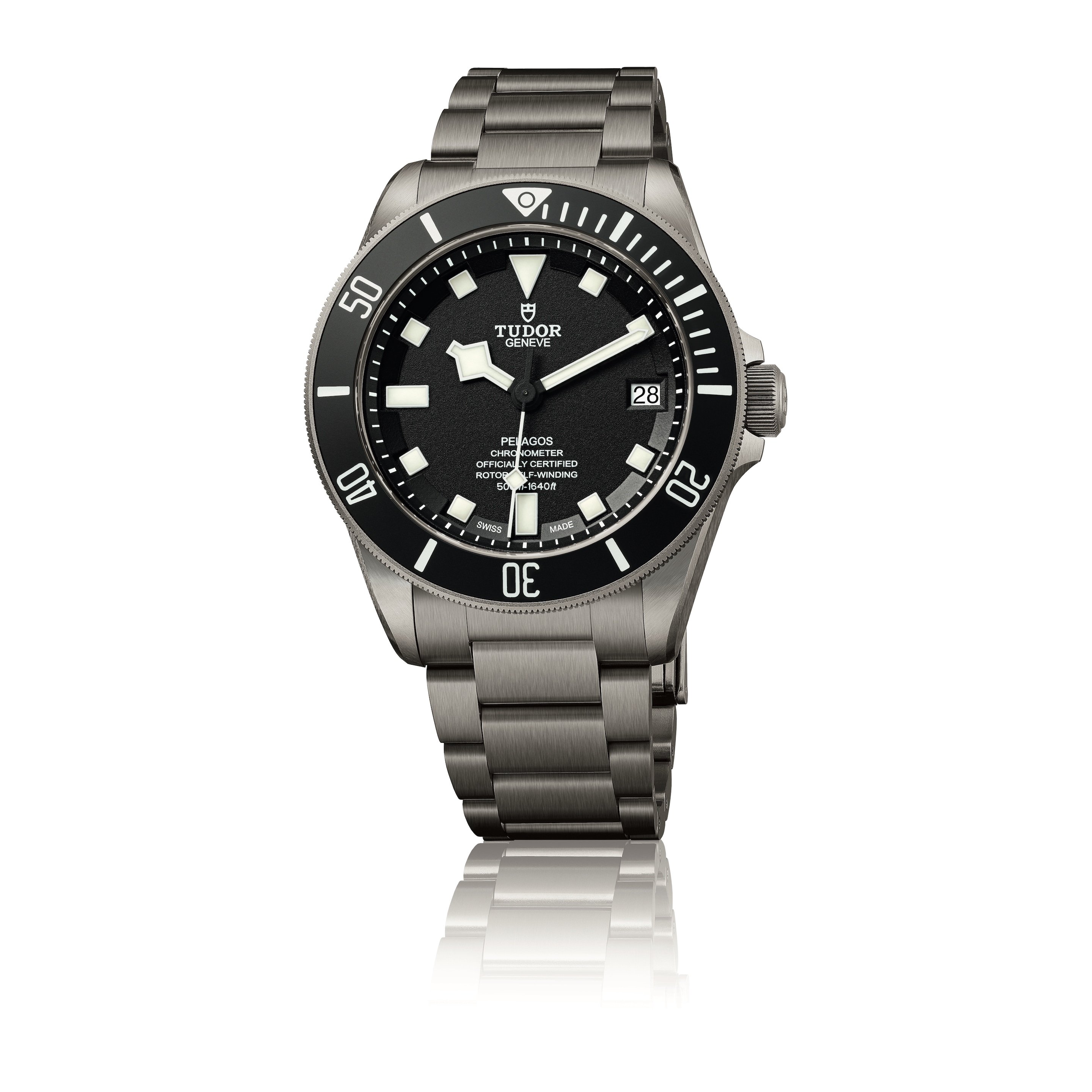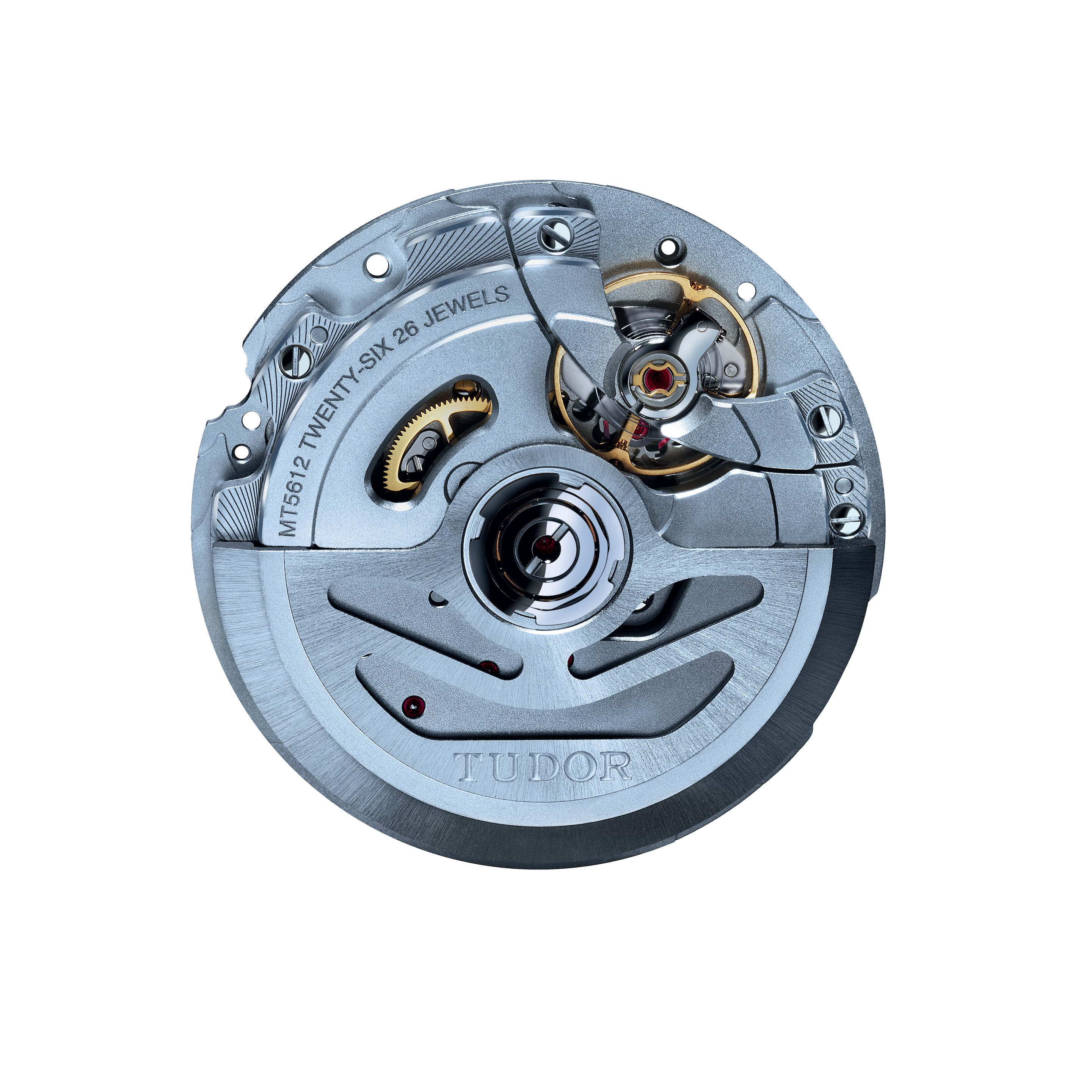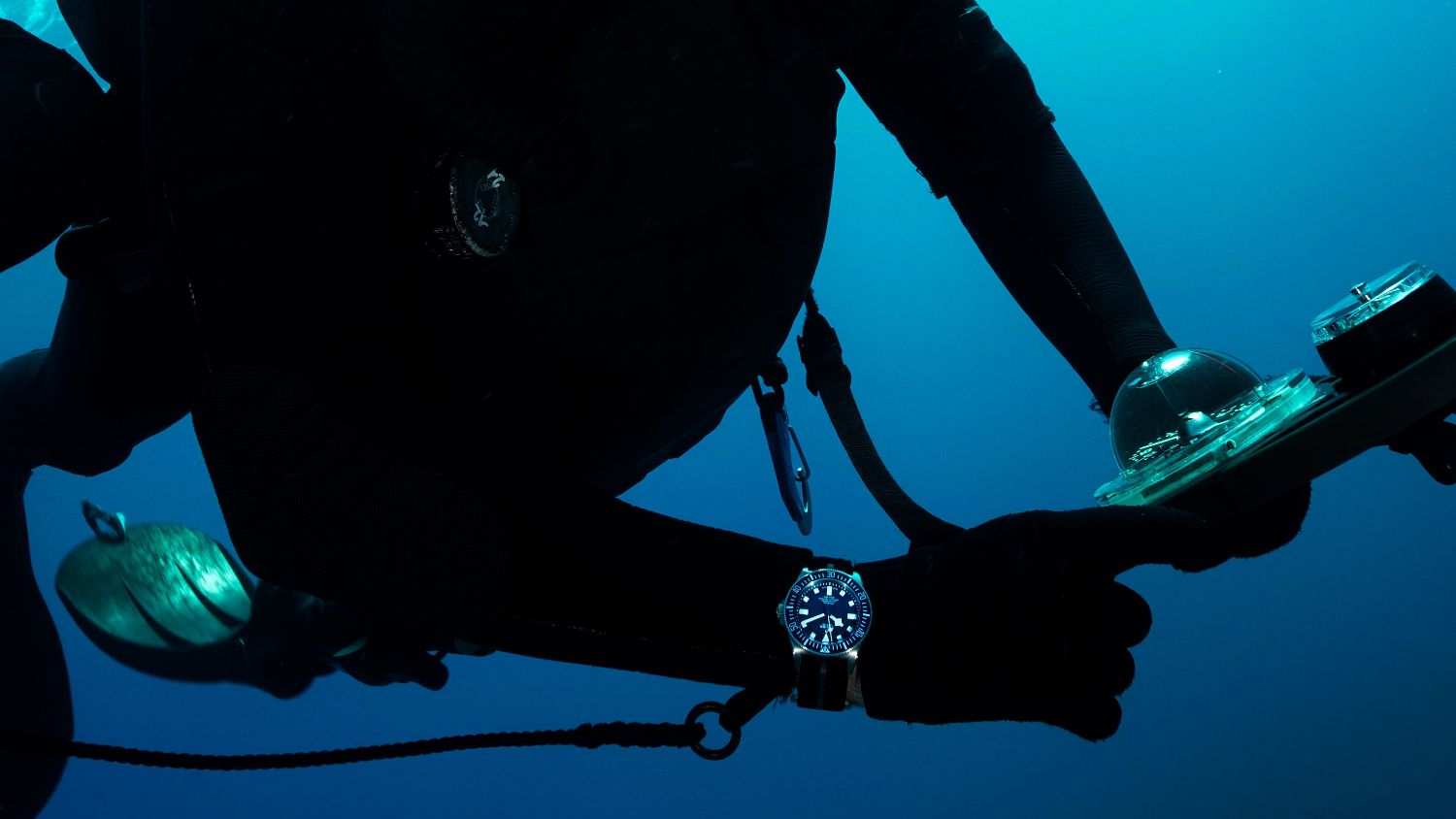As we know now, the watch received an overwhelmingly positive response. And in the hubbub that followed its release, it can be said that the Pelagos, which was released alongside the Black Bay that year (2021), got lost a little. Not that it didn’t get attention. While both models signified a much-needed invigoration for the brand—the Black Bay had a lighter, more stylish edge drawn from heritage models, and the Pelagos personified a hard-core tool watch category—eyes were largely set on the Black Bay.
By all means, the Pelagos was quite impressive. The 42mm Ref. 25500TN was the first titanium watch in both big-brother Rolex’s and Tudor’s arsenal, boasting an impressive water resistance of 500 metres, a matte ceramic bezel, crown guards, and a helium escape valve. Like the Black Bay, it, too, was powered by the ETA2824-2.
However, that subdued start is far from where the Pelagos stands today.
Tudor’s diving legacy
Compared to many historic watch maisons, Tudor is a relatively young brand, established by Hans Wilsdorf in 1946 (the brand name ‘The Tudor’ was transferred to Wilsdorf in 1936 by the house of ‘Veuve de Philippe Hüther’), with the older, more established Rolex guaranteeing the technical, aesthetic, and functional characteristics of Tudor, along with the distribution and after-sales service. Even at the time of its inception, Wilsdorf envisaged Tudor watches to have hardy, working-class bearings—the steel Tudor Oyster Prince, launched in 1952, was positioned as durable, efficient, and precise no matter how hard the conditions. It was powered by Calibre 390, a modified FEF movement with a frequency of 18,000 vph. That same year, Wilsdorf gave 26 Oyster Princes to a British scientific expedition team to wear to Greenland (the 2022 Tudor Ranger was inspired by the spirit of this adventure). The robustness of the Oyster Prince was even field-tested the next year by a coal miner during 252 hours of excavation by hand; by a stonecutter who wore it for three months, and by a motorbike racer over a distance of 1,000 kilometres.
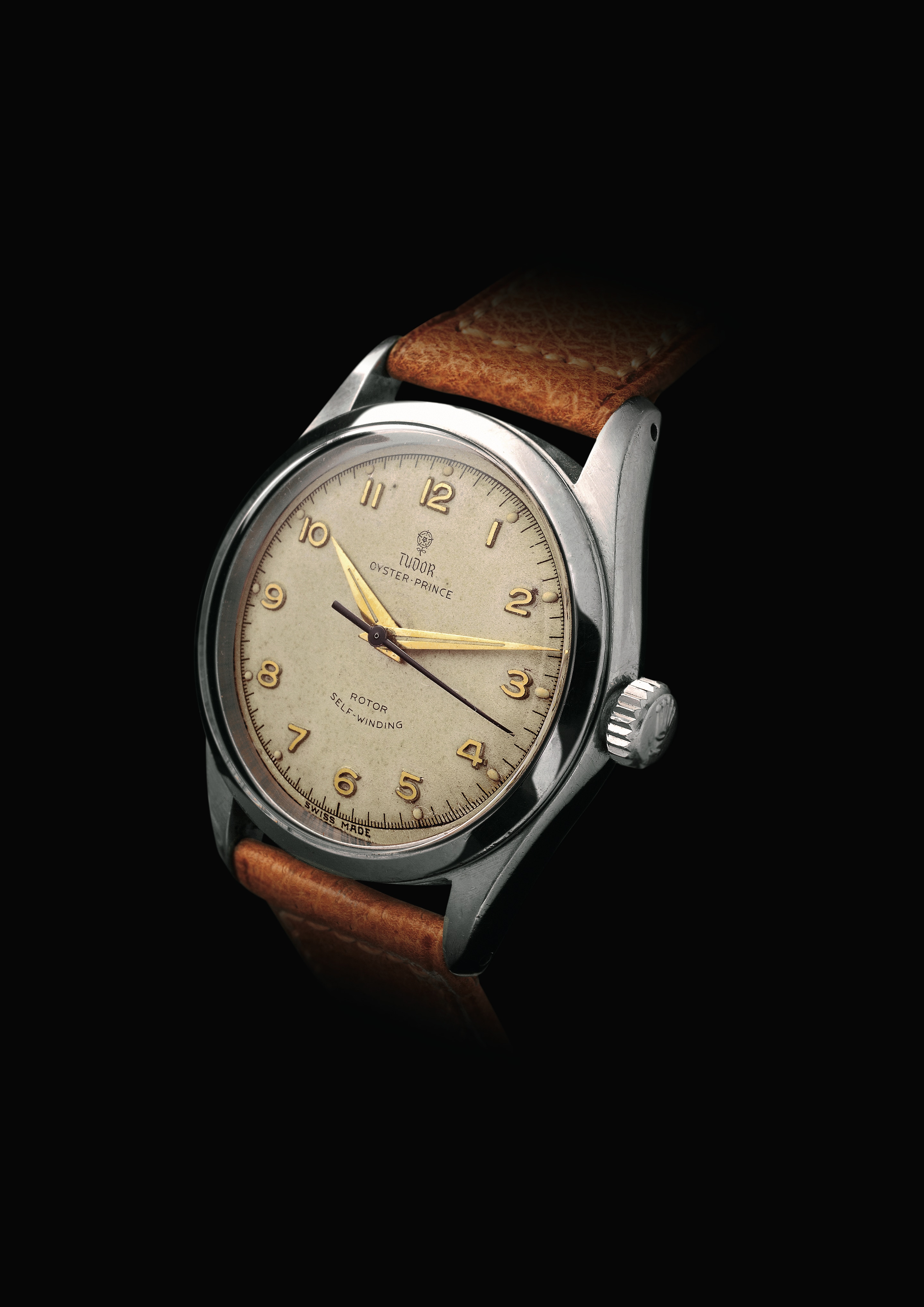 The 1952 Tudor Oyster Prince
The 1952 Tudor Oyster Prince
This legacy of robustness was taken forward by Tudor’s diving watches, the precursors to the Pelagos. Just a year after the launch of the Oyster Prince, 1954 saw the unveiling of the Tudor Oyster Prince Submariner Ref. 7922, the brand’s very first diving watch. The debut model, a 37mm steel watch, had a water resistance of 100 metres, thanks to a case with a screw-down back, a tropic-type, dome-shaped Plexiglas crystal, and a 5mm screw-down crown. With large, pencil-shaped hands on a black lacquer dial, the watches featured gilt-printed markings and big, circular- and bar-shaped radium hour markers and radium-filled hands. The bezel was bi-directional, featuring five-minute intervals to precisely measure dive time. Its Oyster-type bracelet, Reference 6636 with riveted links, was signed with the Rolex logo. It was also powered by Calibre 390.
The next few years saw the Oyster Prince Submariner go through advancements, each version adding to Tudor’s diving watches expertise. In 1955 came Ref. 7923, the only Oyster Prince Submariner with a manually-wound movement, the ETA Calibre 1182 with a frequency of 18,000 beats per hour. While the watch ended up being quite flat, the characteristics of the Oyster case, bracelet, and water resistance continued. What was also different was that the black dial now bore the words ‘Submariner’ and ‘Shock-resisting’, instead of ‘Rotor’ and ‘Self-winding’ at 6 o’clock. Today, this is an incredibly rare, collectible watch—in 2017, a Ref. 7923 from 1956/57 sold for $99,999 in a fierce bidding war on eBay, making it the most expensive vintage Tudor sold publicly.
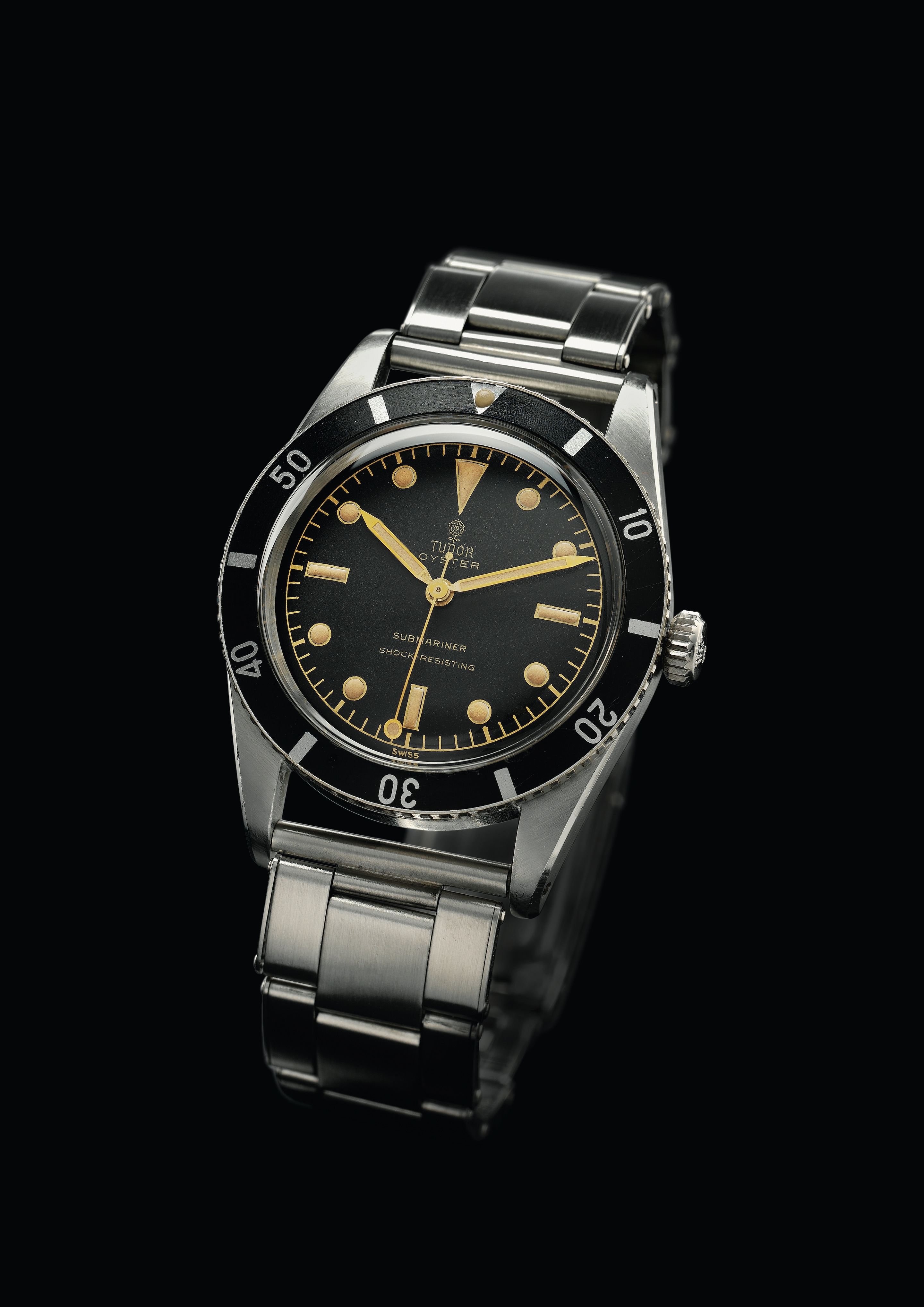 A 1955 Oyster Prince Submariner
A 1955 Oyster Prince SubmarinerWhen the Ref. 7924 came around in 1958, not only did it raise the water resistance of Tudor watches to 200 metres, but also brought design changes. This was the Tudor Oyster Prince Submariner ‘Big Crown’, thanks to its 8mm winding crown that went a long way in helping waterproofness, along with the 37mm case being made thicker; at 6 o’clock on the black dial were the words ‘200m=660 ft’. The new tropic-type Plexiglas crystal was also thicker and dome-shaped, and the watch had the same self-winding Calibre 390 as Ref. 7922. The Oyster-type bracelet, Ref. 7206, bore the Rolex signature. With the Tudor Oyster Prince Submariner Ref. 7928 (1959) and the Ref. 7929 (1960), the focus became the crown guards whose introductions served to protect the crown from shocks. Ref. 7928 had square crown guards, for a crown that was now sized 6mm, on a case that was 39mm. Maintaining a water resistance of 200 metres and with the automatic Calibre 390 inside, it was similar in design to the Refs. 7922, 7924, and 7925. Next year, in the Ref. 7929, the crown guards became pointed, and further models even saw a rounding.
A legacy designed
While the 7900 series of the 1950s set the tone for Tudor’s diving watches, the modern Pelagos’s design derives a lot from the diving watches that came in the 1960s till 1999 (when they last appeared in Tudor’s catalogue). Primarily focusing on design changes, it was a transition flagged off by the 1969 Tudor Oyster Prince Submariner
Ref. 7016 and Ref. 7021.
 A 1969 Tudor Oyster Prince Submariner
A 1969 Tudor Oyster Prince SubmarinerBoth watches appeared in Tudor’s catalogue together. In terms of aesthetics, large, square-shaped hour markers were seen on the dial, along with a new logo, a shield (up until then, a rose was the maison’s logo). A landmark change was also the introduction of snowflake hands, now a Tudor signature, along with a flat, thick Plexiglass crystal. A major technical update was the replacement of the automatic Calibre 390 with an ETA 2483 movement beating at 18,000 vph. Specifications-wise, things were mostly unchanged—it was a 39mm case signed Rolex, the waterproofness was 200 metres with round crown guards, a screw-down crown signed Rolex, a 60-minute bidirectional bezel, and a folding link Oyster-type bracelet, signed Rolex. In the Ref. 7021, the date function in two colours—black and red—and therefore nicknamed ‘Roulette’ after the numbers of the casino game, appeared at 3 o’clock under a cyclops lens. This watch was powered by the ETA Calibre 2484, and the bracelet was the Oyster-type Ref. 7836 with folding links and the Rolex signature. Finally, a new dial and bezel combo in blue was also introduced.
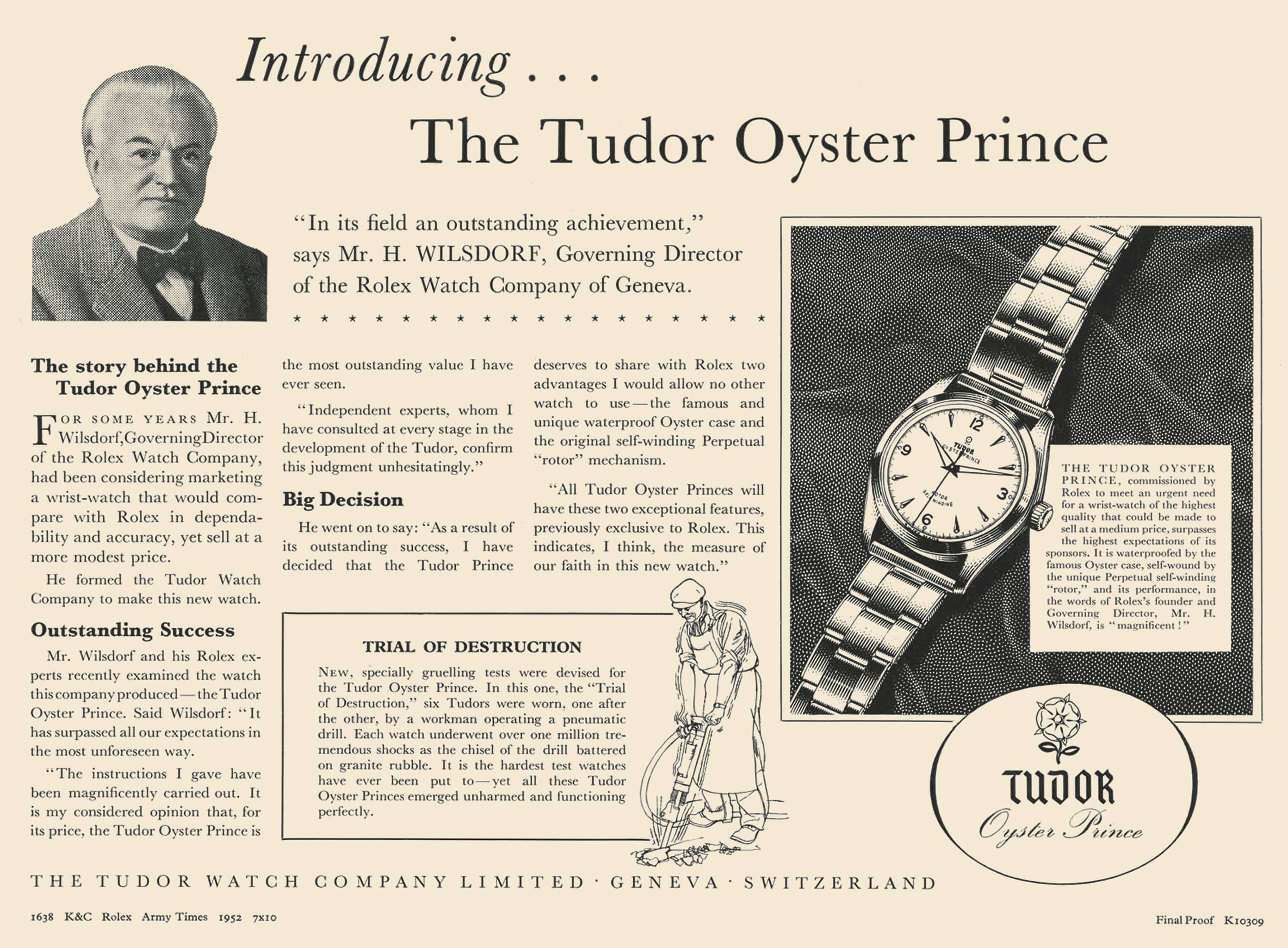 Tudor Oyster Prince ad from 1952
Tudor Oyster Prince ad from 1952 Tudor Oyster Prince ad from 1955
Tudor Oyster Prince ad from 1955Following the Ref. 7016 and Ref. 7021, there were several versions of the Submariner that were made, including the Oyster Prince Submariner with a higher performing ETA Calibre 2776, the Submariner Prince Oysterdate Ref. 79090 with new indices, and smaller case versions like the Prince Oysterdate Mini-Sub and the Princess Oysterdate Lady-Sub. The last of the Submariners was the 1995 39mm Prince Date Submariner Ref. 79190, which featured a sapphire crystal with a cyclops lens, round hour markers, and a unidirectional rotatable bezel with notching. Its dial came in blue or black, and the bracelet was a three-link Oyster-type with the Tudor logo. It was in 1999 that the Tudor Submariner last appeared in the brand’s catalogue.
2012–Present: The Pelagos Years
It is this legacy of design and technical development that the Pelagos, meaning ‘the high seas’, carries forward. The first 42mm version
Ref. 25500TN in 2012 was, of course, reminiscent of the Subs that came before it with a lot of vintage details, but also strived to make the hardcore diving/tool watch aspect really relevant to the 21st century. Crafted in titanium, which offers greater resistance to sea water corrosion, the watch had a double-bevelled flange—on the lower flange rested half of the triangular, bar, and square applied and blue luminescent hour markers, while the upper flange showcased the minute track. The unidirectional bezel, with an injected black ceramic insert with luminescent numerals, had fine serration for a strong grip, and the left side of the case featured the helium escape valve—an important aspect considering this is a watch from the Rolex SA stables—engraved with the words ‘Gas Escape Valve’. The case featured a matte satin finish to it, with bevelled edges, with the crown protected by pointed guards.
 2012 Tudor Pelagos Ref. 25500TN
2012 Tudor Pelagos Ref. 25500TNThe matte black dial featured the date window at 3 o’clock, with ‘Rotor’ and ‘Self-winding’ (remember the
Ref. 7922), along with the ‘collectible’ snowflake hands of the vintage Subs. Its titanium bracelet came on a steel folding clasp with a self-adjusting mechanism via a spring—this detail addressed the expansion and contraction of the diving suit during the ascent and descent, but at the same time making it very comfortable for daily wear. Offered additionally were rubber straps, and an extended one to be worn over a suit.
The watch did come with an off-the-shelf ETA movement 2824, but this was something that the brand addressed in the 2015 Pelagos Ref. 25600TN, which featured an in-house MT5612, COSC-certified automatic movement with a bidirectional rotor and 70 hours of power reserve. Beating at 4Hz, the calibre is regulated by a variable inertia oscillator with a silicon balance spring, held in place by a bridge fixed at both sides to counter shocks and vibrations. The decoration of the movement extended to sand-blasted and sun-ray finishings, along with an open-worked rotor. The watch, now marginally thicker, became available in a blue
(Ref. 25600TB), with the name ‘Pelagos’ appearing at 6 o’clock along with the COSC certification and a reminder of its 500 metres water resistance.
The following year, Tudor addressed the needs of its left-handed patrons with the launch of the Pelagos LHD (Left Hand Drive, Ref. 25610TNL), which apart from its orientation, also presented design changes. This wasn’t Tudor’s first destro watch though—in 1981, it had made the Ref. 94010 for the French navy. Although still crafted in titanium and at a 42mm, the new watch had beige luminescent markings on the bezel and dial, and ‘Pelagos’ in red at 6 o’clock. The calendar disc, also in beige, was designed like the Sub
Ref. 7021, with numbers in red and black. The movement MT5612 was modified to set the winding stem to the left. The Pelagos LHD was the first watch by Tudor to be produced as a numbered series—each model’s unique production number was engraved in large Arabic numerals on the caseback.
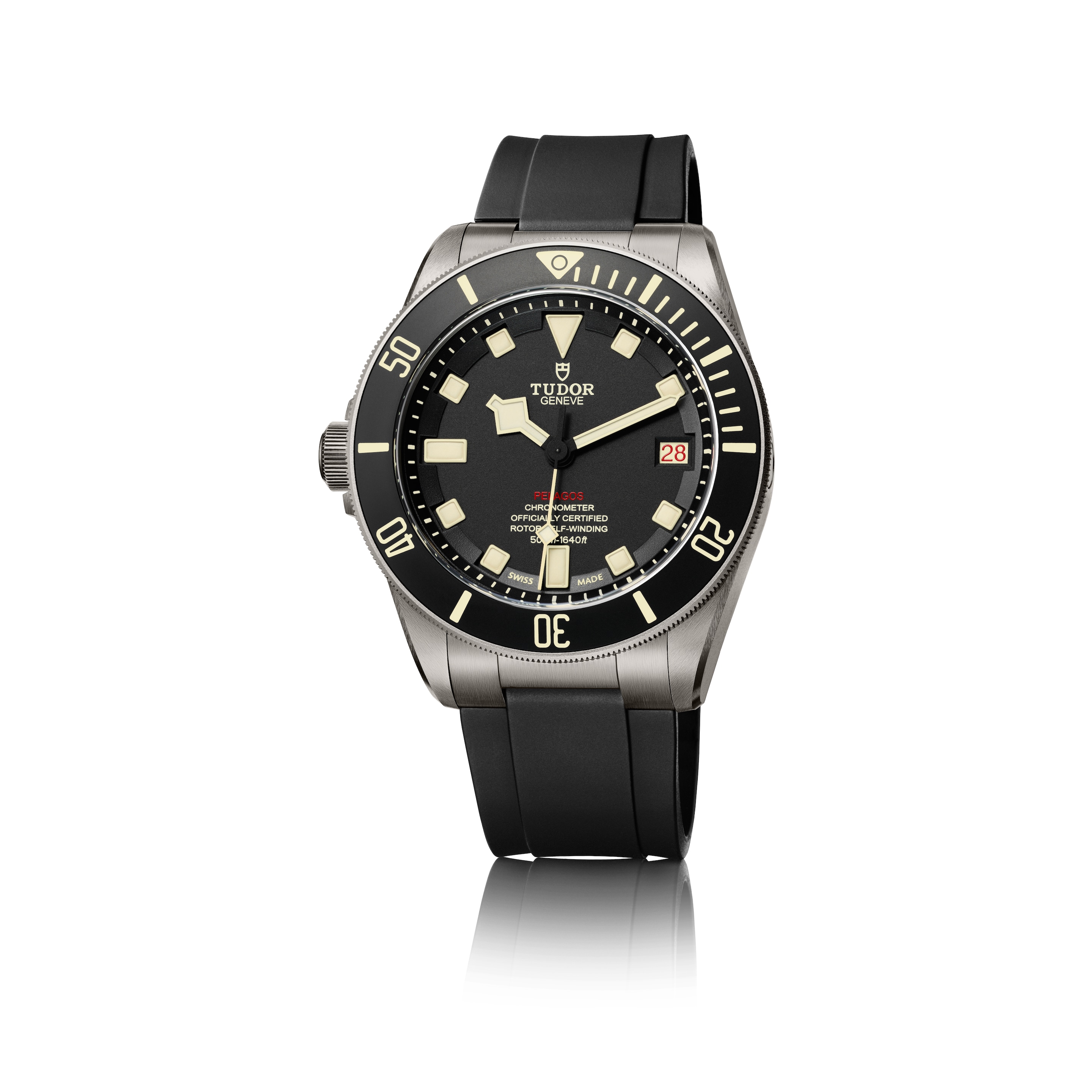 Pelagos LHD
Pelagos LHD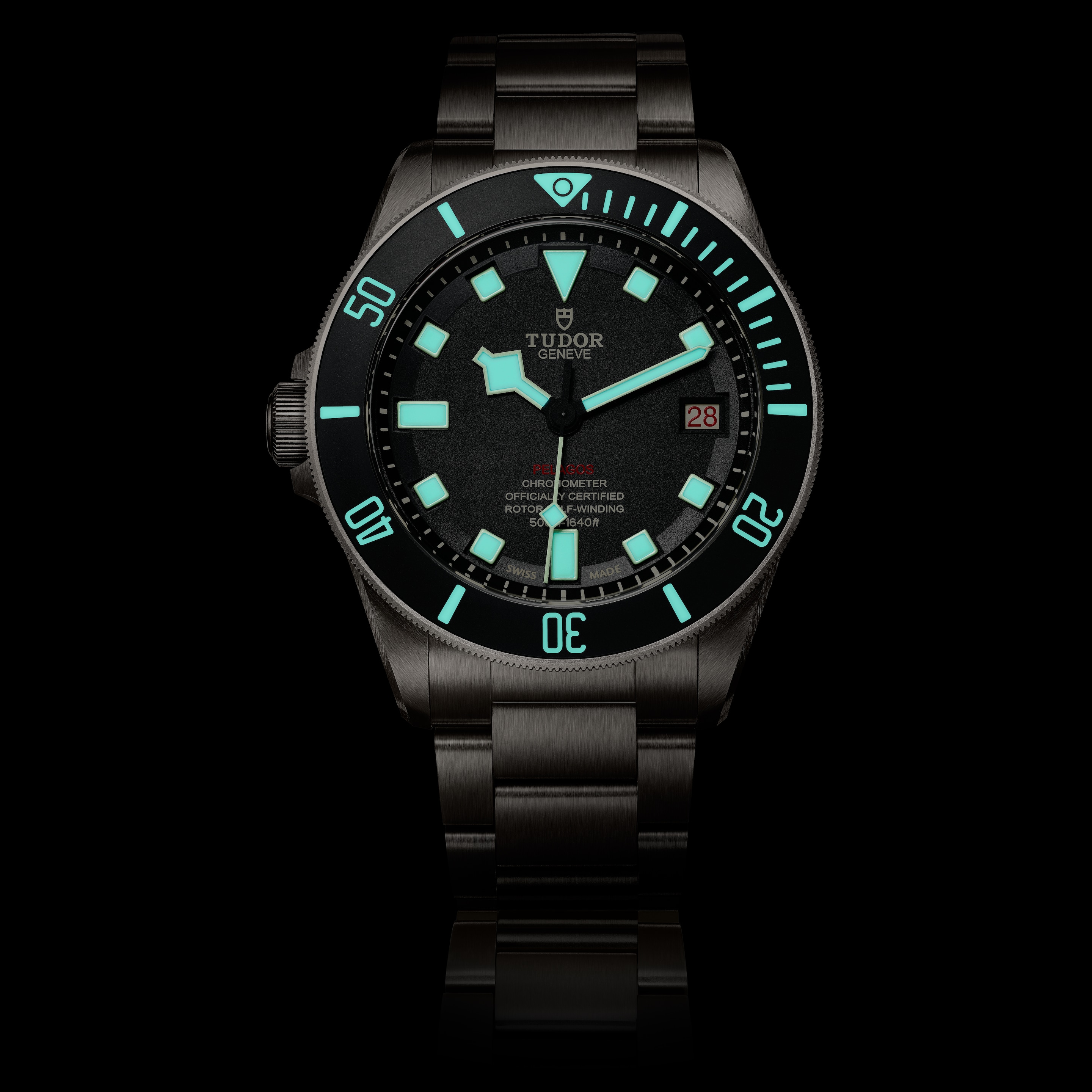 Pelagos LHD
Pelagos LHDThe Military Years
I had deliberately avoided talking about Tudor’s rich history of providing divers watches to armed forces of different countries because it made sense to talk about it in the context of the Pelagos FXD, created in collaboration with the Marine Nationale or the French navy, last year. The Marine Nationale, the US army, and military units of several other countries employed Tudor’s stock divers watches, differentiated only by engravings on the screw-down caseback. In 1964, the Ref. 7928 was supplied to the US Navy, which mounted it on flexible bracelets. The relationship with the Marine Nationale, dating back to 1956, was a special one for Tudor. The Groupe d’Étude et de Recherches Sous-Marines (G.E.R.S.), a scientific body attached to the French Navy used the Refs. 7922 and 7923 to check their feasibility in real-life situations. They found the watches’ performance to be perfect, and by 1961 Tudor was the official supplier to the French navy. Launched in the mid-1970s, the Ref. 9401 was used by the French Marine Nationale divers, who employed parachute belts to make its straps—it was supplied to the French navy until the 1980s. In fact, the aforementioned destro watch Ref. 94010 was a special order placed by a left-handed officer-instructor of the Marine Nationale. The field-testing of these watches provided Tudor important information on the functioning of its diver’s watches. The Pelagos FXD, where FXD stands for extra robust fixed strap bars of the case, is inspired by the Ref. 9401.
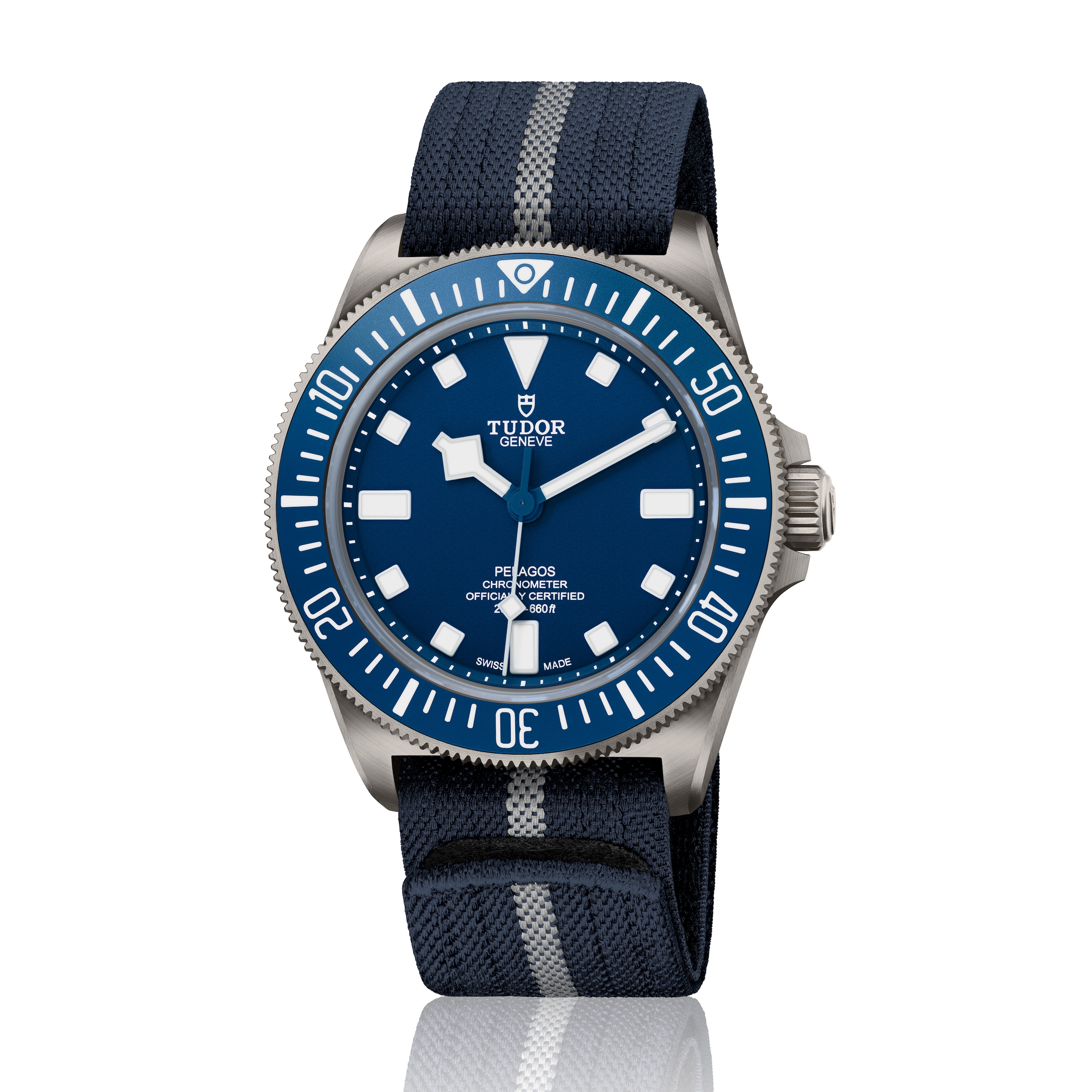 Pelagos FXD
Pelagos FXDDeveloped in conjunction with the French navy’s combat swimmers, the prestigious Commando Hubert, the Pelagos FXD is a 42mm titanium watch with a navy-blue matte dial featuring applied hour markers, which, along with snowflake hands, is filled with grade X1 Swiss Super-LumiNova®. The bi-directional bezel with a large ring for grip, featuring a sand-blasted ceramic insert and grade X1 Swiss Super-LumiNova®, is set with a 60-minute retrograde graduation, and the one-piece navy blue and grey straps have a self-gripping fastening system. An additional one-piece rubber strap with embossed fabric motif is provided. As with the vintage versions, the caseback is engraved with the Marine Nationale logo and the inscription ‘M.N.21’ (Marine Nationale 2021), and the straps are inspired by the parachute elastic belts of yore. It is powered
by the Calibre MT5602 with a 70-
hour autonomy.
Several aspects of the watch cater to the requirements of the elite unit. First of these are the fixed strap bars, machined from a single block, which give the watch its distinct silhouette. Another is the 120-notch rotating bezel designed to meet the needs of a method called ‘underwater navigation’, a speciality of combat swimmers. In this, one reaches an underwater location via a planned route without surfacing. Waterproof to 200 metres, it is entirely satin-brushed to produce a matte effect to limit light reflections. Given all these facets, the Pelagos FXD won the 2022 Diver’s Watch Prize at the GPHG.
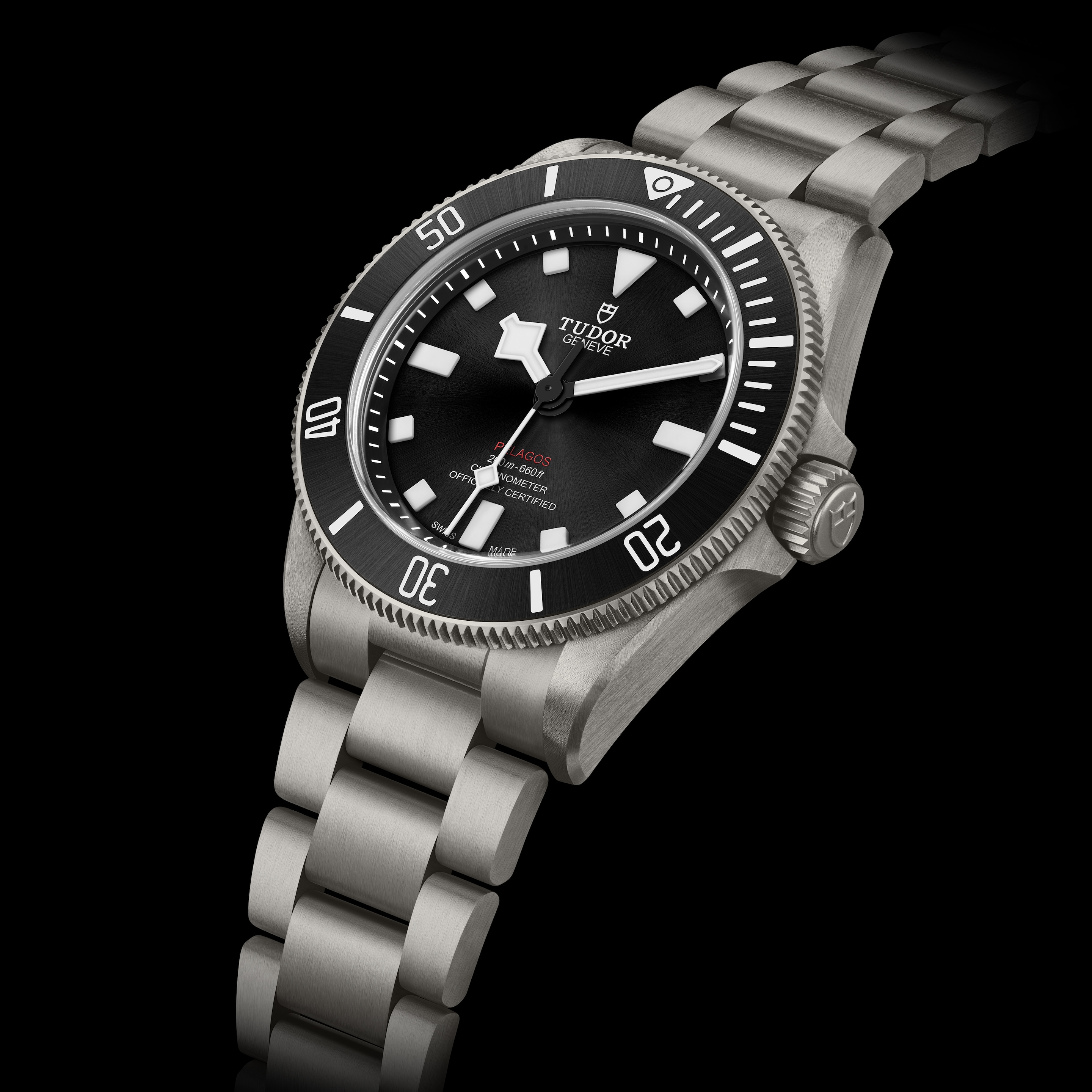 Pelagos 39
Pelagos 39Which brings us to Pelagos 39
(Ref. 25407N), the latest release that segues a hardcore tool watch into an everyday, lifestyle timepiece. When it was unveiled, it unanimously received praises from enthusiasts and experts. Maintaining the essential codes of the Pelagos line (titanium, luminescent hour markers, snowflake hands, satin-finish case) but with a 39mm case, the stylish aesthetic of the watch is lifted by the black ceramic bezel insert with a sunray satin finish, featuring a graduated scale in white luminous material.
In another departure from the Pelagos and Pelagos LHD models—size being the first—the watch has a 45° bead-blasted flange surrounding the matte sunray satin finish dial. Given the smaller case size, the watch is equipped with the Calibre MT5400, with 4Hz frequency and 70 hours power reserve. Equally well calibrated is the satin-brushed titanium bracelet with the ‘T-fit’ clasp for length adjustment—up to 8mm of total length can be easily adjusted without tools. This clasp also has a 25mm bracelet extension function to allow the watch to be worn over a wetsuit. The Pelagos 39 comes with a second strap made of black rubber, with a titanium pin buckle that attaches to the case with titanium end links. Also included is a rubber extension piece that makes it possible to lengthen the strap even further, by up to 110mms.
Form may have followed function for most of Tudor’s vintage diver’s watches, but that was an idea that was quickly upended by Pelagos—not because function now follows form, but because today, as the Pelagos line stands, both ideas are perfectly balanced.
The story first appeared in the WatchTime India's Sports Watches 2022 issue. Subscribe here to get access to more from the magazine.
Images: Courtesy Brand






